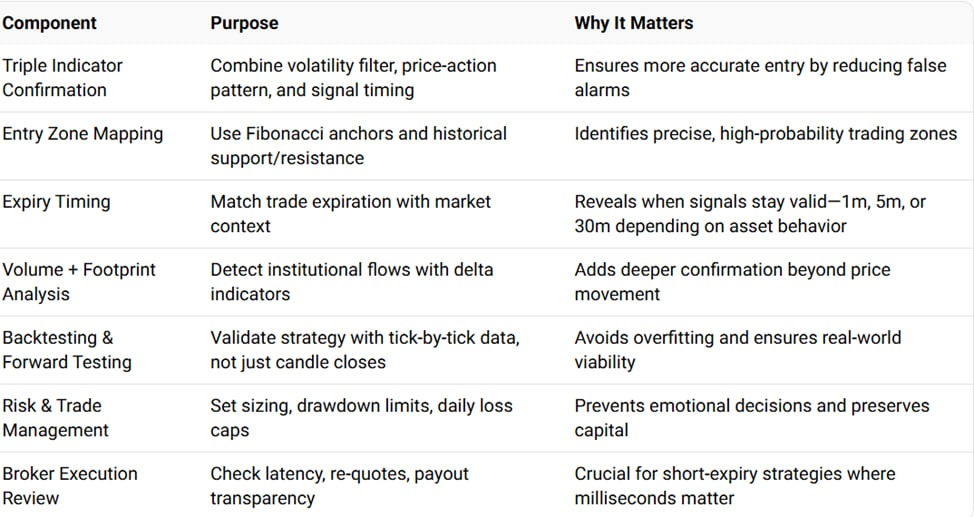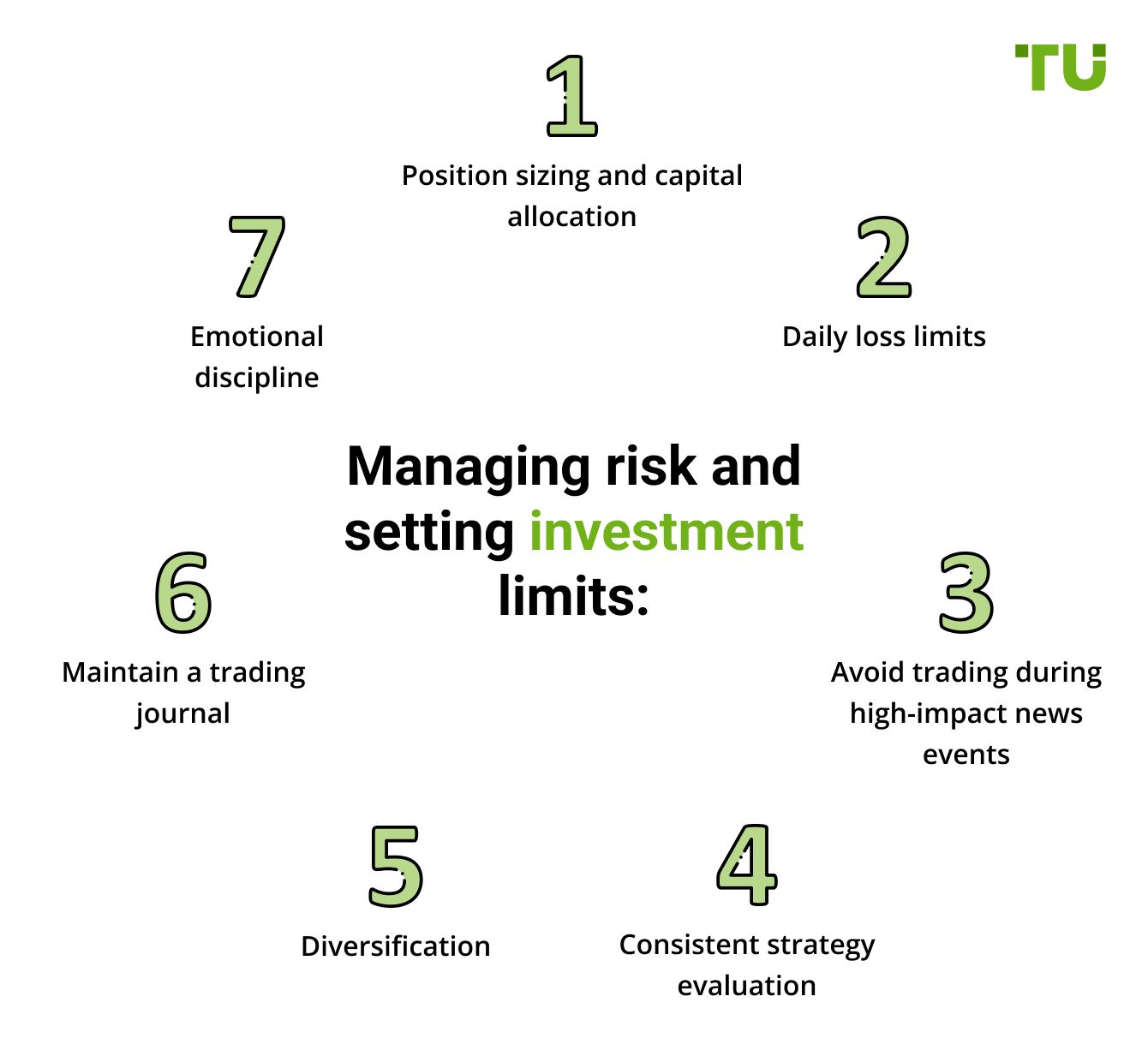
Binary Options Strategy With 90% Win Rate
Achieving consistent results with a binary options strategy that aims for a 90% win rate takes more than just chart patterns or guesswork. It demands solid risk management, careful use of layered indicators, and precise trade timing. While a binary options strategy with 90% win rate is often mentioned in trading circles, no method is foolproof. Success comes from realistic backtesting, sticking to your rules, and working with confirmed data.
Binary options trading focuses on predicting short-term movements in asset prices, which makes it both appealing and risky. Strategies that advertise very high success levels, like those promoting binary options trading strategies with 90% accuracy and signals, often capture the attention of new traders. However, these claims should always be approached critically. Long-term success in this space is built on using reliable indicators, maintaining a structured trading plan, and executing with consistency and control.
Strategy foundations and signal systems
The core of any binary options strategy with a 90% win rate lies in data filtering, not just entry signals. One advanced approach uses triple confirmation: a real-time volatility filter, a customized price action pattern, and a time-sensitive signal window. For example, many pros don't just rely on RSI divergence. They modify the signal by pairing it with implied volatility spikes and candle close bias within exact 5-minute sessions. This removes weak signals and catches high-probability reversals with laser precision.
An extremely accurate Forex and binary options indicator with 90% win rate usually works by fusing market structure with historical reaction zones. These aren’t just support and resistance lines. They’re calculated using a rolling Fibonacci anchor over recent institutional blocks. The result is a predictive zone that doesn’t lag like standard indicators. Combined with event-time triggers, like overlapping with major market opens or high-impact news windows, this creates entries that feel like sniper shots, not guesses.

Indicator-driven approaches
Many traders chase a 95% accurate binary options indicator, but what they often miss is that no indicator works in isolation. The real game-changer is stacking multiple precision tools that work well in specific market conditions. One such method involves combining the Keltner Channel with Relative Strength Index (RSI) divergences on a 1-minute chart during overlapping market hours. This setup filters out false breakouts and only triggers signals when both volatility and momentum agree. Traders using this system report consistent setups with high win ratios, especially during low-news periods.
Another powerful method is tied to volume imbalance detection through footprint charts. While most beginners look at candlesticks or MACD signals, volume-delta indicators expose where institutional money enters or exits. When paired with an auto-adjusting Fibonacci range, this combo can point to binary entries with near-predictive accuracy. One proprietary tool used in advanced trading rooms tracks these shifts and has been marketed as a binary options indicator that is 95% accurate, though the real edge comes from understanding the volume context and not just following dots on a screen.
Evaluating “100%” systems
A “100% win strategy” in binary options is often more of a marketing claim than a technical reality. However, some systems aim to approach a 90% win rate by stacking conditions like volume surges, microstructure imbalance, and low-latency execution. These systems don’t just rely on RSI or MACD indicators, they read order flow anomalies, tick data, and liquidity holes that appear seconds before price reacts. In real setups used by institutional traders, algorithms are tuned to trigger within milliseconds of detecting those micro shifts. Understanding this makes most retail-level binary options' 100% win strategy videos look dangerously oversimplified.
The closest thing to a high-probability strategy lies in adaptive hedging and statistical arbitrage layered with binary entries. For example, some traders use options skew between correlated assets to forecast short-term binary direction. These aren’t static systems. They involve constant recalibration and custom-built scripts. What many don’t realize is that a realistic binary option's 100% winning strategy would need to account for data slippage, variable spreads, and signal lag, things rarely discussed in online forums. Any edge comes from timing precision, not from magical indicators.
Why 90% is considered optimal
A natural question arises: Why is 90% considered the optimal strategy threshold and not 100%? The answer lies in the trade-off between accuracy and feasibility in real-world trading environments. Achieving a 100% win rate would imply total predictability of market behavior - something even the most advanced institutional models cannot guarantee. Market dynamics are influenced by random news events, algorithmic liquidity shifts, and behavioral volatility, making perfect prediction impossible.
The 90% level, by contrast, is where statistical edge meets operational realism. Systems targeting 85–90% are often built with robust risk-reward parameters, conditional filters, and capital management protocols that allow them to endure inevitable noise. Hitting 90% doesn’t mean winning all the time, but rather maximizing favorable probability under tightly defined conditions.
These strategies are typically non-continuous - they do not fire signals all day but wait for ultra-specific market setups. For example, if a system filters for three confluences - microstructure imbalance, institutional orderbook spoofing signals, and liquidity vacuum zones - it may only trade 2–3 times per session. But each trade, if triggered, carries statistically significant weight, often validated by years of tick-data backtesting.
The takeaway is that while the allure of “100% win” systems is strong, the real sophistication lies in engineering strategies that get as close to certainty as technically possible - while still acknowledging the chaotic nature of financial markets.
Backtesting and optimization
Many traders chase the idea of a 100% accurate binary options indicator, but in real-world strategy building, precision comes from rigorous backtesting. Backtesting means applying a strategy to past market data to measure how it would have performed. But what most beginners miss is the importance of tick-by-tick simulation. Using just candle close prices can give inflated win rates, especially in ultra-short binary expiry windows like 30 or 60 seconds. Under optimal conditions, this method historically hit 85–90% in 30-minute expiry on EUR/USD demo accounts, offering a strong starting point for further forward testing. High-frequency anomalies and micro-volatility during those intervals are what actually determine real payout probability, not just whether the candle closed above or below the strike.
Optimization is equally misunderstood. Traders often tweak entry signals until they hit a 90% historical win rate without accounting for forward testing or statistical noise. But the real edge comes when you test your strategy across uncorrelated market sessions, like combining London open volatility with slow-moving Asian sessions. This reveals whether your binary system reacts to market mechanics or just curve-fits past price behavior. Some institutional traders run thousands of parameter sets and cluster the ones that remain stable across session types, instead of choosing the one with the highest backtest profit.
Optimal timing and market sessions
Binary strategies behave differently across time blocks. The London and New York sessions (13:00–17:00 UTC) often offer the cleanest price action and higher volume, which supports signal strength. Avoid low-volume hours (e.g., post-U.S. close or pre-Asia open) as these increase the likelihood of false breaks and signal distortions.
Broker platforms and execution
Choosing a broker with precise execution and no re-quotes is vital. For example, some binary options platforms offer 30–60 second expiries but lack strong charting tools. Others integrate MetaTrader with binary plugins, which allow advanced analysis.
Check for:
- Order execution speed (<100 ms ideal).
- Charting fidelity (real-time updates, no delays).
- Minimum trade size and payout (avoid <70% payouts).
- Regulatory transparency (CySEC, ASIC, etc.).
To help you choose the best binary options platform, we have researched and curated a list of the top 5 binary options platforms in the market. You can compare them using the table below and choose the best one for yourself:
Top 5 binary options brokers
CloseOption
IQcent
Binarycent
VideForex
Binary.com
Data validation and transparency
Traders should demand proof before adopting any system claiming 90% or greater accuracy. Key metrics to request or produce include:
- Win/loss ratio across 100+ trades.
- Expectancy (average return per trade).
- Maximum drawdown.
- Strategy breakdown by market condition.
Independent forward-test logs and visual result verification (screenshots, timestamped signals) are better than backtest-only marketing materials.
Risk control and application limits
 Managing risk and setting investment limits
Managing risk and setting investment limitsEffective risk management plays a key role in sustaining long-term success when trading binary options. While many traders are drawn to the idea of finding a binary options strategy with 90% win rate, such high-performance approaches only work when paired with strict and consistent risk control. Below are essential practices that can help you manage risk effectively:
1. Position sizing and capital allocation
- Manage your risk per trade. Keep your exposure limited to around 1–2% of your total account balance on any single trade. For example, if you have a $5,000 account, risk no more than $50–$100 per trade.
- Avoid chasing losses. Resist the urge to increase trade sizes after a loss in hopes of quickly recovering. Doing so may lead to larger drawdowns and emotional decision-making.
2. Daily loss limits
Set a maximum daily loss limit. Decide ahead of time how much you're willing to lose in one day (for instance, 5% of your total capital). If that number is hit, step away from the market to prevent rash decisions and emotional trading.
3. Avoid trading during high-impact news events
Use an economic calendar. Stay informed about major news announcements, as they often bring extreme volatility. These sudden market shifts can easily disrupt even the most reliable setups and increase your risk exposure.
4. Consistent strategy evaluation
- Backtest thoroughly. Analyze your strategies on historical data to understand their past performance and potential weaknesses.
- Forward test in demo mode. Before committing real funds, test your strategy in live market conditions using a demo account to validate its effectiveness.
5. Diversification
- Expand across multiple assets. Don’t rely on just one instrument. Trade across different categories like currencies, commodities, and indices to distribute your risk.
- Mix up your tactics. Apply different approaches to suit various market environments. Using a combination of binary options trading strategies with 90% accuracy and signals can help you stay adaptable and reduce over-reliance on a single setup.
6. Maintain a trading journal
Document key trade details, why you entered, how it turned out, and how you felt emotionally. Reviewing your own decisions can uncover patterns that lead to improvement over time.
7. Emotional discipline
- Avoid revenge trades. Don’t let frustration lead you into impulsive decisions just to make up for losses.
- Stick with your trading plan. Follow your pre-established rules and risk parameters, even if the market tempts you to deviate.
Conclusion
While high-accuracy systems are appealing, practical binary options trading requires realism and tested frameworks. Whether using a binary options indicator that is 95% accurate or building an extremely accurate Forex and binary options indicator with 90% win rate, success comes from controlled strategy execution, appropriate risk exposure, and clear performance validation, not from overreliance on any single tool or signal.
Post a comment